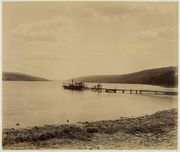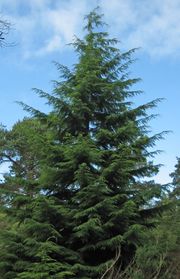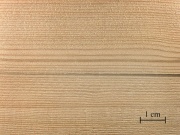Difference between revisions of "Hemlock"
(username removed) |
|||
| (7 intermediate revisions by 2 users not shown) | |||
| Line 1: | Line 1: | ||
| − | [[File:Chin.Hemlock_PMAC.jpg|thumb|Chinese hemlock | + | [[File:Hemlock lake photo MFA.jpg|thumb|Hemlock Lake photo<br>MFA# 1991.675]] |
| − | + | [[File:Tsuga_heterophylla1.jpg|thumb|Hemlock ''Tsuga heterophylla<br>Image credit Wikipedia'']] | |
| − | ''Tsuga Chinensis'']] | + | [[File:Chin.Hemlock_PMAC.jpg|thumb|Chinese hemlock ''Tsuga Chinensis'']] |
== Description == | == Description == | ||
| Line 10: | Line 10: | ||
eastern hemlock (''Tsuga canadensis'' -also called Canadian hemlock and hemlock spruce); western hemlock (''Tsuga heterophylla'' -also called hemlock fir and Prince Albert's fir); European hemlock (''Conium maculatum'' -also called poisonous hemlock); Japanese hemlock (''Tsuga diversifolia''); Siebold's hemlock (''Tsuga sieboldii''); pruche du Canada (Fr.); spruce pine | eastern hemlock (''Tsuga canadensis'' -also called Canadian hemlock and hemlock spruce); western hemlock (''Tsuga heterophylla'' -also called hemlock fir and Prince Albert's fir); European hemlock (''Conium maculatum'' -also called poisonous hemlock); Japanese hemlock (''Tsuga diversifolia''); Siebold's hemlock (''Tsuga sieboldii''); pruche du Canada (Fr.); spruce pine | ||
| − | + | == Physical and Chemical Properties== | |
| − | + | * Height = medium to large trees (10-60m) with branches stemming in flattened sprays | |
| − | + | * Bark = gray to brown with deep furrows that scale | |
| − | + | * Leaves = flattened needles (5-35 mm long, 1-3 mm wide). Occur spirally on stem, but lie flat on the stem (Wikipedia [https://en.wikipedia.org/wiki/Tsuga]) | |
| − | + | * Cones = oblong cylinders (15-40 mm long) Seeds are small and winged. | |
| − | + | * Density = 25-35 ppcf | |
| − | = | ||
| − | |||
| − | |||
| − | == | + | == Resources and Citations == |
| + | * The Wood Database: [https://www.wood-database.com/softwoods/pinaceae/tsuga/ Tsuga] | ||
| + | * Wikipedia: https://en.wikipedia.org/wiki/Tsuga (Accessed October 12, 2020) | ||
* G.S.Brady, ''Materials Handbook'', McGraw-Hill Book Co., New York, 1971 Comment: p. 394 | * G.S.Brady, ''Materials Handbook'', McGraw-Hill Book Co., New York, 1971 Comment: p. 394 | ||
| Line 30: | Line 29: | ||
* ''Dictionary of Building Preservation'', Ward Bucher, ed., John Wiley & Sons, Inc., New York City, 1996 | * ''Dictionary of Building Preservation'', Ward Bucher, ed., John Wiley & Sons, Inc., New York City, 1996 | ||
| − | * ''Encyclopedia Britannica'', http://www.britannica.com Comment: "hemlock." | + | * ''Encyclopedia Britannica'', http://www.britannica.com Comment: "hemlock." Accessed 3 Dec. 2004 |
* Edward Reich, Carlton J. Siegler, ''Consumer Goods: How to Know and Use Them'', American Book Company, New York City, 1937 | * Edward Reich, Carlton J. Siegler, ''Consumer Goods: How to Know and Use Them'', American Book Company, New York City, 1937 | ||
Latest revision as of 08:30, 9 August 2022
Description
Any of several evergreen conifer trees of the genus Tsuga. Hemlock trees are native to North America and Asia. These softwood trees produce a timber that is stiff and splinters easily. The light yellow wood is primarily used for paper pulp, boxes, and crates. The bark extract from the eastern hemlock, T. canadensis, and western hemlock, T. heterophylla, trees is high in tannins containing up to 22%. The extract is also used as a dye to produce colors ranging from a pinkish tan to a dark gray. Native Americans used hemlock to dye basketry and blankets.
Synonyms and Related Terms
eastern hemlock (Tsuga canadensis -also called Canadian hemlock and hemlock spruce); western hemlock (Tsuga heterophylla -also called hemlock fir and Prince Albert's fir); European hemlock (Conium maculatum -also called poisonous hemlock); Japanese hemlock (Tsuga diversifolia); Siebold's hemlock (Tsuga sieboldii); pruche du Canada (Fr.); spruce pine
Physical and Chemical Properties
- Height = medium to large trees (10-60m) with branches stemming in flattened sprays
- Bark = gray to brown with deep furrows that scale
- Leaves = flattened needles (5-35 mm long, 1-3 mm wide). Occur spirally on stem, but lie flat on the stem (Wikipedia [1])
- Cones = oblong cylinders (15-40 mm long) Seeds are small and winged.
- Density = 25-35 ppcf
Resources and Citations
- The Wood Database: Tsuga
- Wikipedia: https://en.wikipedia.org/wiki/Tsuga (Accessed October 12, 2020)
- G.S.Brady, Materials Handbook, McGraw-Hill Book Co., New York, 1971 Comment: p. 394
- Palmy Weigle, Ancient Dyes for Modern Weavers, Watson-Guptill Publications, New York, 1974
- F. H. Titmuss, Commercial Timbers of the World, The Technical Press Ltd., London, 1965
- Dictionary of Building Preservation, Ward Bucher, ed., John Wiley & Sons, Inc., New York City, 1996
- Encyclopedia Britannica, http://www.britannica.com Comment: "hemlock." Accessed 3 Dec. 2004
- Edward Reich, Carlton J. Siegler, Consumer Goods: How to Know and Use Them, American Book Company, New York City, 1937
- Van Nostrand's Scientific Encyclopedia, Douglas M. Considine (ed.), Van Nostrand Reinhold, New York, 1976
- Random House, Webster's Encyclopedic Unabridged Dictionary of the English Language, Grammercy Book, New York, 1997
- The American Heritage Dictionary or Encarta, via Microsoft Bookshelf 98, Microsoft Corp., 1998


